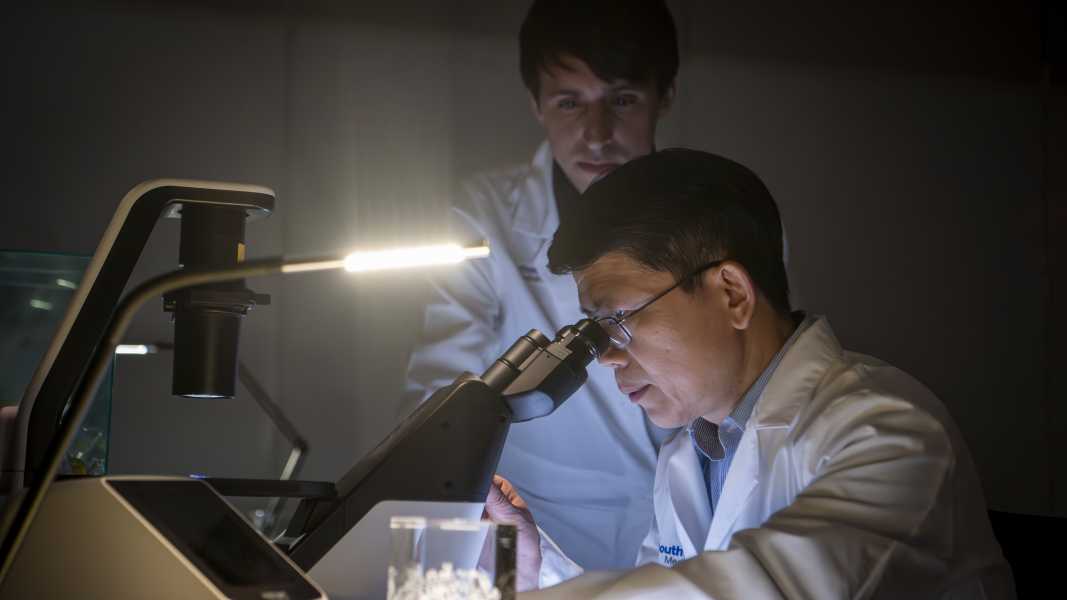
Zhijian “James” Chen was awarded the prestigious prize for his basic research. (Photo courtesy of the University of Texas Southwestern Medical Center)
The coveted $250,000 research prize will be awarded to a scientist who has advanced the understanding of the role of protein in human immune defense.
Biochemist Zhijian “James” Chen, who is director of the Center for Inflammation Research and a professor of molecular biology at the University of Texas Southwestern Medical Center, has won one of this year's Lasker Awards, biomedical research prizes often called “America's Nobel Prizes.”
Chen led the research that led to the discovery of a key enzyme, cyclic GMP-AMP synthase (cGAS), that functions as an alarm system in the body. Instead of reacting to smoke, cGAS is activated in response to the DNA of foreign agents, such as viruses and bacteria. Before the discovery of cGAS, scientists didn’t know how this DNA activates the innate immune system, the body’s first line of defense against foreign substances.
cGAS: Signaling About Self and Other DNA – YouTube
See more
Ilya Mechnikov, who won the Nobel Prize in 1908, discovered phagocytosis, the process by which one cell engulfs another. It is one of the ways that immune cells clear pathogenic bacteria from the body. In his Nobel lecture, Mechnikov emphasized that bacterial DNA somehow activates the body’s “defensive army of phagocytes,” but at the time no one knew exactly how this happened.
Later studies in the early 2000s showed that injecting cells with DNA increased levels of interferons, immune signals that help fight infections. Scientists later identified a group of genes responsible for producing these interferons, called stimulators of interferon genes (STINGs). Although STINGs do not recognize foreign DNA directly, the DNA somehow activates STINGs.
Starting with a paper published in 2012, Chen and his team finally began to fill in the missing links in this process. The first link was cyclic GMP-AMP (cGAMP), a molecule that activates STING when foreign DNA is introduced into cells. The second link was cGAS, an enzyme that allows mammalian cells, including humans, to produce cGAMP.
In the body’s early warning system, cGAS is an alarm signal that detects foreign DNA and calls in reinforcements in the form of cGAMP. In turn, cGAMP recruits the “fire brigade” — in this case, the innate immune system, including cells that gobble up the invaders.
Sourse: www.livescience.com





